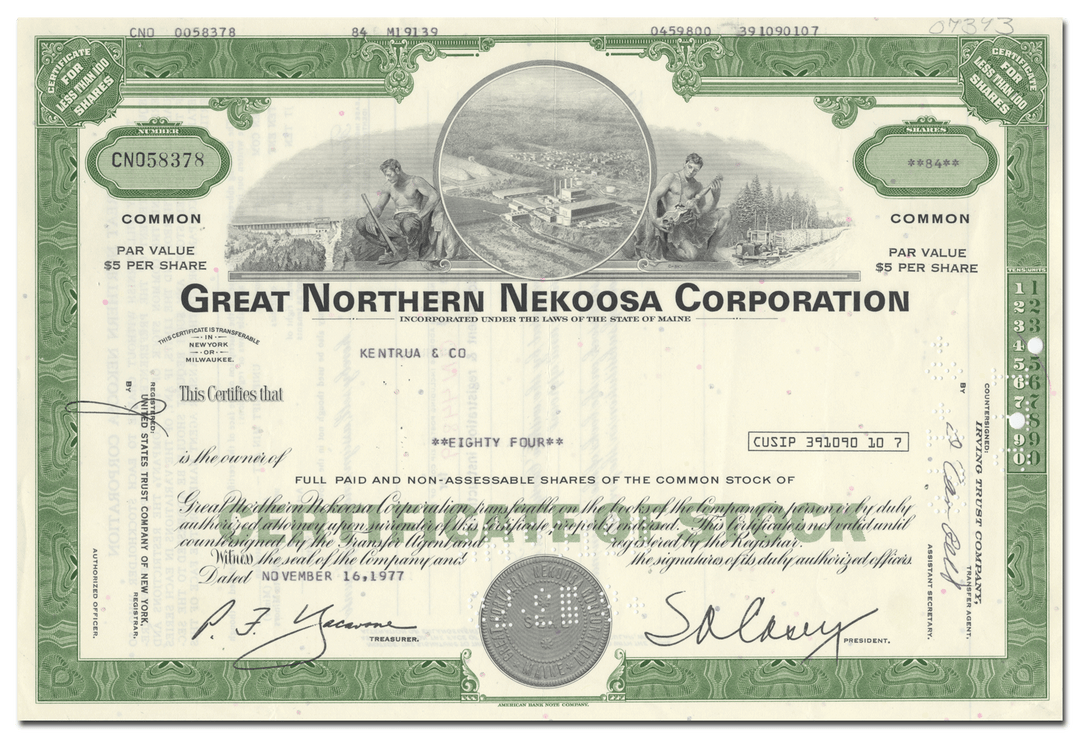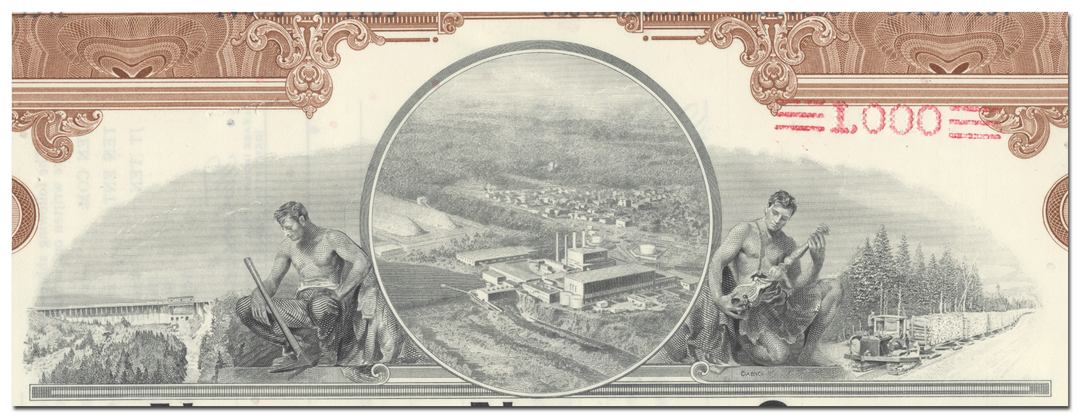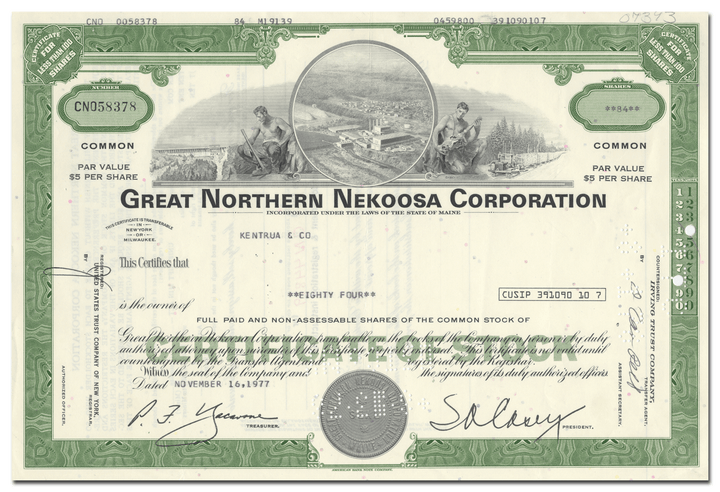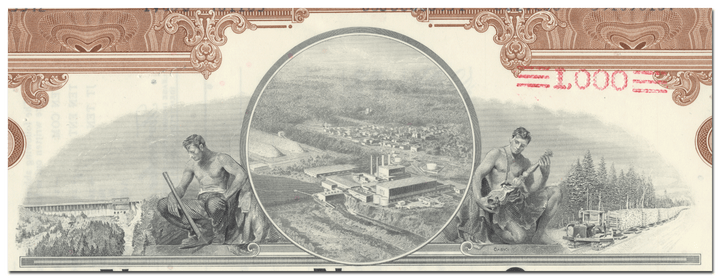Great Northern Nekoosa Corporation
- Guaranteed authentic document
- Orders over $75 ship FREE to U. S. addresses
Product Details



Great Northern Nekoosa Corporation
Certificate Type
Common Stock
Date Issued
May 26, 1976 (green)
April 18, 1978 (brown)
Canceled
Yes
Printer
American Bank Note Company
Signatures
Machine printed
Approximate Size
12" (w) by 8" (h)
Additional Details
NA
Historical Context
This company got its start when the Maine legislature authorized Charles W. Mullen to form a water power company on the West Branch Penobscot River. Mullen had observed the 110-foot drop of the West Branch Penobscot River at Grand Falls in 1891 while surveying a route for the Bangor and Aroostook Railroad. He later worked with Garret Schenck, part owner of the Rumford Falls Paper Company, to build a paper mill in Millinocket, Penobscot County, Maine on the river. Schenck formed the Northern Development Company in 1897.
The Millinocket plant produced its first roll of newsprint on November 9, 1900. A second mill in Madison opened in 1906. A third one opened in East Millinocket in 1907, which also had its own dam and hydroelectric facility. Financiers of the corporation included Oliver Payne and William Collins Whitney.
When the Millinocket Mill opened it was the world's largest paper mill, producing 240 tons/day of newsprint, 120 tons/day of sulfite pulp, and 240 tons/day of groundwood pulp. It was the first paper mill to have an electrical generation and distribution facility built into the plant. The company's innovations included a pulpwood grinding machine still known throughout the paper industry as Great Northern grinders.
In the 1910s Great Northern built the Ripogenus Dam and power plant on the West Branch of the Penobscot River. Construction of a thermal power plant in 1958 raised the total generating capacity of the Millinocket mill complex to 200,000 horsepower (150,000 kW). High-pressure steam generated by burning waste bark was routed first through generator turbines, and the low-pressure exhaust steam was then used to dry the paper. Mid-20th-century paper production of 1,000 tonnes per day was sold to 250 newspapers east of the Mississippi River.
In 1930 the company sold 6,000 acres around Maine's highest point, Mount Katahdin, for $25,000 to former Maine Governor Percival Proctor Baxter. In turn Baxter donated the land to the state, for what became the present-day Baxter State Park.
In the 1940s its timber holdings increased to more than 2 million acres and its work force was supplemented during World War II by a prisoner of war camp at Seboomook Farm near Moosehead Lake.
In 1962, the Great Northern Paper Company expanded to Jakin, Georgia, where it formed a subsidiary named the Great Southern Land and Paper Company. It produced linerboard and corrugating medium.
In 1970, the Great Northern Paper Company merged with the Nekoosa-Edwards Paper Company in Port Edwards, Wisconsin, and was renamed the Great Northern Nekoosa Corporation. New mills were built in Arkansas and Mississippi.
In 1971, the company completed construction of the 97-mile Golden Road in Maine that paralleled the West Branch of the Penobscot River from Quebec to its mill at Millinocket. It ended the practice of floating logs down the river via log driving, and instead shipped them by truck.
In 1989, Georgia-Pacific launched a hostile takeover of the company which closed in 1990 for $3.8 billion. Georgia-Pacific in turn sold the Maine holdings to Bowater in 1991.
In 1999, Inexcon, a Canadian company, acquired the Maine holdings.
Related Collections
Additional Information
Certificates carry no value on any of today's financial indexes and no transfer of ownership is implied. All items offered are collectible in nature only. So, you can frame them, but you can't cash them in!
All of our pieces are original - we do not sell reproductions. If you ever find out that one of our pieces is not authentic, you may return it for a full refund of the purchase price and any associated shipping charges.













